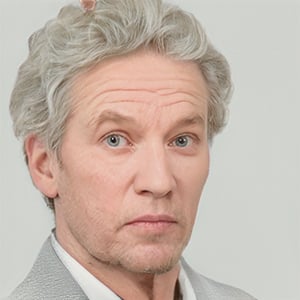TASK 1
P1 Needs, Wants and Preferences of Target Customers
| Holiday Maker | Local food | √ | Terrible customer service | Waiters wearing dinner jackets and bowties | √ | |
| Overpriced, poor quality food | × | Meals brought to the bedside | √ | Poolside service | √ | |
| Person in a 1st date | Terrible customer service | × | Candlelight | √ | Soft music | √ |
| Bottle warmers | × | No garlic in the dishes | √ | Unpleasant smells from the drains | × | |
| Pop Star | Terrible customer service | × | Private section of the restaurant | √ | Champagne | √ |
| Fast food | √ | Bottle warmers | Luxurious food | √ |
TASK 2
M1 Review of Customer Engagement Factors
Executive Summary
This report is based on requirementers ans and expectations of different consumd driving factors of customer engagement. Preferences of individuals tend to determine engagement factors of consumers. This report has analyzed different preferences of different types of consumers and their engagement factors.
Introduction
Requirements and preferences of individuals depend on physical and mental conditions, social background, financial condition, age, profession. These factors have a direct impact on requirements and expectations of consumers in all service sectors including hospitality industry. It has been found that business organizations of hospitality industry offer different services for attracting different types of consumers.
This report has involved different business strategies that are employed to attract different types of consumers.
Needs, Wants and Preferences of Target Customers (P1)
Business organizations try to improve their consumer engagement for enhancing business profitability. As stated by Peppers and Rogers (2016), for increasing consumer engagement business organizations need to identify needs, wants and preferences of different types of consumers. It has been found that specialized services are required for satisfying requirements of all consumers in the hospitality industry. For example- a holidaymaker tends to prefer local food of travel destinations, as it offers new experiences. People go on holiday for refreshment and enjoyment. In this context, it can be said that holidaymakers prefer luxurious services. On the other hand, a person going on the first date prefers fancy services like candlelight dinner. Hence, it can be said that mental conditions, physical health, surroundings everything has an influence on the requirements and expectations of consumers. It has been observed that famous personalities like Pop Star prefer private section in the restaurant for avoiding crowds. Shaw and Hamilton (2016) have commented that business organizations have to identify these individual requirements for achieving customer satisfaction.
Driving Factors of Customer Engagement (P2)
Depending upon wants, needs, and preferences of consumers, factors of engagement change. Foroudi et al. (2018) have opined that consumer experience tends to improve due to the presence of customer engagement factors. For example- availability champagne, luxurious food can act as consumer engagement driving factor in case of Pop Star. On the other hand, the person going on the first date is engaged by availability of soft music, pleasant smells, and beautiful interior decor. Business organizations utilize these opportunities while delivering services. It has been found that business organizations select a target group and design their services accordingly. As commented by Wiedmann et al. (2016), identification of target group is essential for delivering customer engagement factories. If a hospitality organization wants to holidaymaker, they have to arrange services like bedside meals, poolside services, affordable and good quality foods. Business strategies of organizations belonging from hospitality industry depend on customer preferences solely.
Recommendations and Conclusions
Hospitality services are designed to satisfy requirements and expectations of consumers. In this context, it can be recommended that business organizations need to choose a target customer first. After identification of target consumer, business organizations can arrange their services and business strategies accordingly.
Requirements and expectations of an individual depend on physical and mental condition, age, economic status, social and cultural back group, profession. Business organizations need to understand different needs of different types of customers while developing business strategies. Customer engagement factors tend to differ from person to person based on their preferences. It can be concluded that business organizations need to select their strategies according to preferences of target consumers.
TASK 3
P3 Customer Experience Map
- Website: Customers generally look at the website of restaurants while searching for new places or for booking tables at known places (Nyadzayo and Khajehzadeh, 2016). Hence, the restaurant website needs to have a warm and welcoming approach to attract the attention of consumers.
- Review Sites: Consumers look for review sites of restaurants before trying a new place. Our Restaurant needs to have high-quality services to gain positive review from consumers, which in turn attracts new customers.
- Text Messages: Restaurants can send text messages to the consumer for conveying discounts, offers or a new menu. Consumers interact through text messages of restaurants if the restaurant sends it (Trainor et al. 2014). Generally, consumers do not initiate a text conversation with the restaurant.
- E-Mails: Consumers interact with this touch point for providing feedback regarding services of restaurant, or else restaurants send emails to convert special offers or discounts. Our Restaurant needs to be active in providing an answer to feedback emails f consumers.
- Paper Mail: Restaurants send paper mail to consumers on special occasions (Navimipour and Soltani, 2016). Consumers interact with this touch point very less, as communication has become dependent on digital media.
- Telephone: Consumers interact with this touch point for asking for assistance regarding opening hours or available services of a restaurant. Consumers use telephone for conveying complaints also. Telephone services of restaurants need to be active and efficient enough to satisfy requirements and expectations of consumers.
- Restaurant Environment: Consumers interact with this touch point after entering the restaurant. Consumer satisfaction is significantly dependent on environment of the restaurant apart from food and services quality (Krishna and Ravi, 2016). Restaurant environment needs to be well decorated and chaos free for satisfying consumers' requirements and expectations.
- Restaurant Staff: Consumers can interact with is touch point while being in a restaurant or by telephone. Behaviour and attitude of restaurant staffs have a remarkable influence on consumer satisfaction. Staffs need to have warm approach while dealing with consumers.
- Restaurant Management: This touch point involves consumer interaction on several occasions, for example in a restaurant, through telephone or over official website. Management determines all facilities and services of the restaurant (Karjaluoto et al. 2014). It can be said that improvement in restaurant management has the potential to achieve higher levels of consumer satisfaction.
M2 Detailed Customer Experience Map
Customer: Hi!
Counter Assistant: Hello Sir! How can I help you? (With a welcome smile)
Customer: I want to know about the procedure of booking table here.
Counter Assistant: Sir, the details are given on our official website. (Politely)
Customer: I have tried to find it but I could not find it. Can you tell me the proceedings? (Annoyingly)
Counter Assistant: Okay Sir. You can do it in two different ways. You can book your table on the desired schedule over our website by filling up the requirements or...
Customer: I have said you that I am not being able to search for booking options on your website. Can you tell me something else? (Interrupting the Counter Assistant)
Counter Assistant: Yes,Sir I was going to tell the other procedure. (Maintaining warm approach and eye contact)
Customer: Okay tell then. (Rudely)
Counter Assistant: You can call at our office and book table according to your convenience. (Maintaining warm approach and eye contact)
Customer: Can you tell me the number?
Counter Assistant: Yes,Sir! Take our card! Anything else sir?
Customer: No Thanks!
Counter Assistant: Welcome Sir and have a good day! (Warm smile)
D2 Influence of Service Sector to Enhance Customer Experience
Customer service is an essential aspect of the business, as it determines the level of customer satisfaction. Pret A Manger is quite popular for its excellent customer services. It has been found that this organization has a customer service department named ‘Talk to Pret' (Pret.com, 2018). However, apart from services over the telephone, customer service includes interaction with consumers within the restaurant. As stated by Shafique et al. (2015), restaurant staffs need to have warm approaches for ensuring the return of consumers. In the case of Pret A Manger, it has been found that this restaurant trains the staffs for providing right behaviour and attitude all consumers. Staffs of this restaurant offer a warm and welcoming approach while dealing with consumers. It has been observed that Staffs of Pret A Manger, always maintain a smile while talking with customers. This helps the customers to feel comfortable and welcomed in outlets of Pret A Manger. In addition, it has been observed that staffs of Pret A Manger greet consumers at the time of entry and exit in the outlet. Such a warm approach increases consumer satisfaction significantly and encourages them to revisit the outlets of Pret A Manger.
P4 Business Opportunities Created by Customer Experience
Customer touch points are developed by restaurants for enhancing customer experience. It has been observed that customer satisfaction does not involve only the quality of food and beverages. Higher levels of customer satisfaction are achieved by enhancing the consumer experience by providing additional services than just serving food and beverages. Khodakarami and Chan (2014) have commented that customer services create the second most important impact on customer satisfaction level after the quality of food and beverages. Pret A Manger has created several touch points for enhancing business performance. For example- this restaurant has an expert customer service team called Talk a Pret. this team offers high quality services to consumers over the internet, telephone and within different outlets. Wali and Wright (2016) have stated that attitudes and behaviour of employees is one of the major factors that determine return of consumers. Employees of Pret A Manger greet all the consumers in war and pleasant way and always smile while talking. In addition, they never behave rudely to the customers, even if the customer is annoying. It has been observed that these touch points have increased customer satisfaction level of this restaurant significantly. This, in turn, created business opportunities for this organization by increasing the revisit of consumers.
P5 Digital Technology
What was the name of the company making the presentation?
Ans: Name of the company making the presentation was Black & White Hospitality.
What was the name of the person who made the presentation?
Ans: Julian Hook
What is the name of the software programme that they demonstrated in presentation?
Ans: OPERA
What are the key elements of the programme?
Ans: Key elements of the program-
- Linking software program with table booking, room booking
- Linking with hospitality services like housekeeping, reservations
- EPOS systems
- Program used by hotels having four and five-star ratings
What are their current customers?
Ans: Hilton International, Marco Pierre White Restaurants, International Hotel Groups, and Travelodge
How long have they been in business?
Ans: Black & White Hospitality is in business from 2014 and OPERA is in business from the 1970s (Blackandwhitehospitality.com, 2018).
How does the Company see these programmes developing in the future?
Ans: The Company sees these programmes developing the following factors in future:
- Increased functionality
- Further integration with consumers
- Identification of new market trends
- Entry in new market
- Better feedback analysis
M3 Digital Technology in Customer Experience
Popular CRM or Customer Relationship Management providers of the United Kingdom are Salesforce, Zoho and Copper. Gu et al. (2015) have opined that CRM providers help business organizations for maintaining relationship with large customer base more efficiently. In addition, it has been found that CRM systems tend to improve profitability by enhancing product and service quality. It has been observed that Salesforceis appropriate for medium-sized business organizations. This CRM provider offers bespoke platforms, which are beneficial for managing sales, marketing, and consumers simultaneously. Salesforce provides cloud-based services to business organizations for increasing its accessibility and availability. As stated by Valmohammadi (2017), cloud services are gaining increasing popularity in the hospitality industry due to its efficiency. Another CRM provider is Zoho, which includes about 50,000 customers (Expertmarket.co.uk, 2018). This CRM provider is suitable for small-sized and medium-sized business organizations. This CRM provider is popular among clients due to its easy to use interface. Like Salesforce, this CRM provider also manages sales, marketing, and consumers’ services efficiently. On the other hand, Copper, CRM provider, is popular for its innovative approach. This CRM provider is beneficial for introducing automation in business practices. OPERA, CRM provider described in the workshop, offers services for monitoring different stages of sales process. This CRM provider keeps details of business organizations including entire consumer base. It has been found that each CRM provider has own advantages and disadvantages based on their characteristics.
D3 Advantages and Disadvantages of CRM Systems
CRM or Customer Relationship Management is one of the major business strategies that is adopted by organizations for managing interaction and communication with large customer base. Ahmad et al. (2016) have commented that CRM systems are beneficial for staying connected with all consumers while improving profitability of the organization. In general, CRM systems have several advantages to business organizations. It has been found that CRM helps business organizations to forecast their sales accurately. In addition, it enhances cross-team collaboration by facilitating communication among employees. As a result, the productivity of business organizations tends to increase significantly. The management team of business organizations becomes more efficient in keeping records of sales metrics.
Read Also: Influence of Artificial Intelligence in the Future
REFERENCES
Books
- Peppers, D. and Rogers, M., 2016.Managing customer experience and relationships: A strategic framework. Hoboken: John Wiley & Sons.
- Shaw, C. and Hamilton, R., 2016.The Intuitive Customer: 7 Imperatives For Moving Your Customer Experience to the Next Level. Berlin: Springer.
Journals
- Ahmad, A., Wahit, M.S., Farid, M.S. and Kadir, B., 2016. The Effect of Pricing, Market Access and Customer Relationship Management Toward Social Media and Entrepreneurship (SMEs) Growth.Journal Postgraduate,1(2), pp.1-7.
- Karjaluoto, H., Töllinen, A., Pirttiniemi, J. and Jayawardhena, C., 2014. Intention to use mobile customer relationship management systems.Industrial Management & Data Systems,114(6), pp.966-978.
- Khodakarami, F. and Chan, Y.E., 2014. Exploring the role of customer relationship management (CRM) systems in customer knowledge creation.Information & Management,51(1), pp.27-42.
- Krishna, G.J. and Ravi, V., 2016. Evolutionary computing applied to customer relationship management: A survey.Engineering Applications of Artificial Intelligence,56(1), pp.30-59.
- Navimipour, N.J. and Soltani, Z., 2016. The impact of cost, technology acceptance and employees' satisfaction on the effectiveness of the electronic customer relationship management systems.Computers in Human Behavior,55(1), pp.1052-1066.
- Nyadzayo, M.W. and Khajehzadeh, S., 2016. The antecedents of customer loyalty: A moderated mediation model of customer relationship management quality and brand image.Journal of Retailing and Consumer Services,30(1), pp.262-270.
- Shafique, M.N., Ahmad, N., Abbas, H. and Hussain, A., 2015. The impact of customer relationship management capabilities on organizational performance; moderating role of competition intensity.Arabian Journal of Business and Management Review (Nigerian Chapters),3(3), pp.28-47.
- Trainor, K.J., Andzulis, J.M., Rapp, A. and Agnihotri, R., 2014. Social media technology usage and customer relationship performance: A capabilities-based examination of social CRM.Journal of Business Research,67(6), pp.1201-1208.
- Valmohammadi, C., 2017. Customer relationship management: Innovation and performance.International Journal of Innovation Science,9(4), pp.374-395.
- Wali, A.F. and Wright, L.T., 2016. Customer relationship management and service quality: Influences in higher education.Journal of Customer Behaviour,15(1), pp.67-79.















